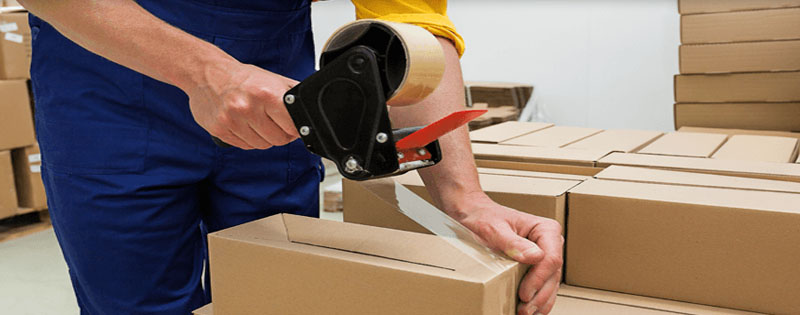Packing for a move can be one of the most overwhelming tasks in the entire relocation process. It requires organization, time, and a bit of strategy to ensure that your belongings are packed securely and efficiently. Whether you’re moving to a new city, a new home, or simply downsizing, how you pack plays a vital role in the overall success of your move. The way you approach packing can save you both time and money, reduce stress, and make the transition to your new space smoother.
For beginners, or anyone who has not experienced the moving process in a while, the thought of packing everything up can feel daunting. But with a little guidance and a well-organized approach, packing can be far more manageable. In this guide, we’ll walk you through the essential steps, tips, and tricks to help you pack like a pro.
Whether you’re relocating within the city or need long-distance transport, https://pianomoversoftexas.com/piano-movers-san-antonio/ delivers top-tier service. Their reputation in San Antonio is built on reliability, attention to detail, and excellent customer care, making them a preferred choice for piano owners.
1. Start Early: The Importance of Planning
The most crucial tip when packing for a move is to begin as early as possible. Packing isn’t a one-day job—it requires time and patience. Ideally, you should start packing a few weeks before your moving day. This gives you ample time to sort through your belongings and make decisions on what to keep, what to donate, and what to throw away.
When you start early, you also reduce the pressure of last-minute packing. Many people make the mistake of waiting until the day before the move, which can result in hurried decisions and poorly packed boxes. Early planning helps you avoid these pitfalls and makes the entire process smoother.
2. Gather Your Supplies
Before you even begin packing, make sure you have the necessary packing materials. Proper packing supplies will not only help keep your items secure but also make the entire process more organized. Here are some must-have supplies:
-
Boxes: You’ll need boxes of various sizes. Medium boxes are often the most versatile, but larger boxes may be useful for bulkier items, and smaller boxes are perfect for heavier items like books.
-
Packing tape: Use quality packing tape to seal boxes securely. Avoid using duct tape or masking tape as they are not as strong.
-
Bubble wrap and packing paper: These materials are essential for cushioning fragile items. Bubble wrap provides excellent protection for delicate or breakable items, while packing paper can be used for wrapping and filling voids.
-
Markers: Label each box with a permanent marker. Clearly mark what’s inside and the room it belongs to in your new home.
-
Stretch wrap or moving blankets: For large furniture, stretch wrap can help secure everything, while moving blankets offer protection for delicate surfaces.
Having the right packing materials will make the entire process more efficient and prevent unnecessary damage to your possessions.
3. Sort and Declutter
Before you start putting things in boxes, take the time to declutter. Moving is the perfect opportunity to get rid of items you no longer need or use. Not only will this save you the hassle of packing and unpacking unnecessary things, but it can also help lower your moving costs, as movers often charge based on the weight of the load.
Go through each room and assess what you truly need. Donate or sell items that are still in good condition but no longer serve you, and dispose of anything broken or unusable. The fewer items you have to pack, the quicker and easier the process will be.
4. Pack by Room
To stay organized and make unpacking easier, pack one room at a time. Begin with the least-used rooms—such as guest bedrooms or storage areas—so that you’re not packing things you’ll need in the days leading up to your move.
When packing a room, group similar items together. For example, all the kitchen utensils, pots, and pans should be packed together. This not only keeps your packing process organized, but it also makes it easier to unpack later since everything you need for a specific room is already in one place.
Use sturdy boxes and fill any gaps with packing paper or bubble wrap. This ensures that items are not shifting during transit and are less likely to break. Try not to overpack boxes; they should be heavy enough to carry but not so heavy that they’re difficult to lift.
5. Pack Fragile Items with Extra Care
When it comes to packing delicate or fragile items, extra care is needed. Begin by wrapping each fragile item in bubble wrap or packing paper. Make sure that every surface is covered, and secure the wrap with packing tape. For items like plates, cups, or glassware, it’s best to pack them upright, as you would store them in a cabinet, rather than stacking them flat.
For electronics like TVs, computers, and speakers, use their original boxes if possible. If not, find appropriately sized boxes and wrap them thoroughly in bubble wrap. Ensure that cords and accessories are packed separately in a clearly labeled bag or box.
While packing fragile items, it’s important to note that even the best-packed boxes can shift during transit. So, always ensure that you’ve labeled the box as “fragile” in large, bold letters and marked the top to indicate the box should remain upright.
6. Maximize Space and Minimize Weight
In packing, efficiency is key. To maximize space, consider using suitcases and bags that you already own. These are often underutilized during a move, but they can be a great way to store clothing, bedding, and soft goods like towels. You can also use items like blankets and pillows as packing material to protect fragile items, which not only saves space but also reduces the number of packing materials you’ll need.
When packing clothing, try to keep items on hangers and use large trash bags to cover them, or roll clothes neatly to save space. Avoid overpacking boxes—heavier boxes are harder to lift, and they’re more prone to breaking. It’s better to have more boxes than to pack them too tightly.
7. Label Everything
One of the simplest but most essential tips for packing is labeling. Label each box with a description of what’s inside and the room it should go to in your new home. For example, “Kitchen – Glassware” or “Living Room – Books.” This will help you stay organized and ensure that the movers or helpers know exactly where to place each box when unloading.
Additionally, you should number your boxes, especially if you have a large move. Keep a master list that matches the box numbers to their contents. This will come in handy when unpacking, as you’ll be able to identify which boxes contain the most critical items, such as toiletries or clothing.
8. Pack an Essentials Box
As the move day draws near, create an essentials box that contains everything you’ll need immediately upon arrival at your new home. This might include toiletries, a few changes of clothes, important documents, and basic kitchenware (like cups, plates, and utensils). Having this box handy means you won’t have to go searching through boxes for essentials on the first night in your new home.
9. Be Mindful of Moving Day
The last part of packing involves making sure that everything is ready for moving day. Double-check your inventory list to make sure you haven’t left any essential items behind. If you’re using professional movers, ensure that the movers know the layout of your old and new home, especially if there are parking constraints or stairs involved.
When packing your car, remember to load it with any valuable or irreplaceable items like jewelry, important documents, and small electronics. This way, you’re guaranteed that these precious items remain safe and within your control during the move.
Conclusion
Packing doesn’t have to be a stressful or chaotic process. With early planning, the right packing supplies, and a strategic approach, you can streamline the task and ensure that your move is as smooth as possible. Start early, declutter, and pack with care—this will not only make your moving experience more efficient but will also give you peace of mind knowing your belongings are in good hands. By following these packing tips, your transition to your new home will be that much easier, and you’ll be ready to unpack and settle into your new space without hassle.

